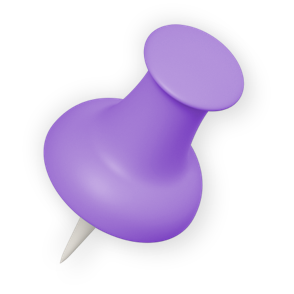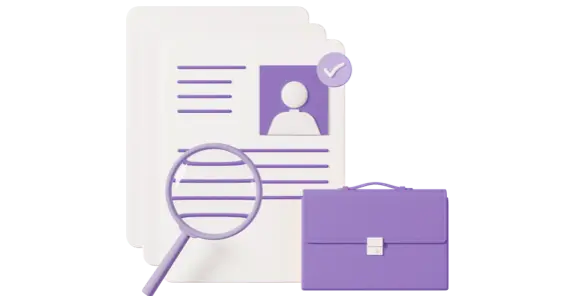User experience (UX) designer
Use research to understand users and help design physical or digital products that are useful and easy to use.
Also known as: web designer, interaction designer, experience designer

About the job
Salary
Source: National Careers Service
Weekly
£346
Entry level
£769
Experienced
Monthly
£1,500
Entry level
£3,333
Experienced
Yearly
£18,000
Entry level
£40,000
Experienced
5,800
people are currently employed
High growth
400 more jobs in 5 years
These figures refer to this job and similar ones with comparable skills and qualifications. They only apply to Scotland. Source: Oxford Economics
A day in the life — user experience (ux) designer
What it's like
You’ll be involved in designing sites and software, targeted at specific target groups and end users.
Working to a set of core design principles, you’ll be involved in creating applications and sites that are easy to navigate, good to look at and simple and pleasurable to use.
Handling the full spectrum of user’s interactions with a brand, you’ll be involved in creating engaging experiences – using design techniques to create a unique branding identity for the client company.
As part of your role, you’ll:
Use specialist software to design front-end experiences
Sketch visual concepts on paper and using applications
Work on cross-platform applications to develop user experiences
Design user-focused websites

Hours

Environment

Travel
Explore more information about this job
Here are some useful links to learn more about this career:
Like the sound of this career?
Browse courses in Scotland related to 'User experience (UX) designer'
Select qualification level(s)
Other careers that you might like
Web developer Web editor Content designer Service designer Virtual reality designer
Related industries
Many jobs can be done in lots of different industries. We've highlighted the ones we think are most important for this job.
Transport Healthcare Financial services Engineering and manufacturing Digital technologies Creative
Top skills
Skills are things you're good at. Whether you know what yours are or not, everyone has them!
It's useful to learn which ones are important in a job so you know the areas you need to brush up on. It can also help you work out if you're suited to a career.
Here are some of the skills you'll need to do this job:
- attention to detail
- problem solving
- innovative
- designing
- creative
- working with technology
- verbal communication
- listening
- cooperating
- reflecting

Your skills are important
Our unique skillsets are what make us stand out from the crowd. Learn about each skill in depth and discover what employers look for in your applications and interviews.
Getting in
Explore the sections shown for more information about getting into this career.
You might have qualifications which are not shown here but will allow you access to a course. You can compare your qualifications by looking at their SCQF Level. For more information about this, check out the SCQF website.
Always contact the college, university or training provider to check exactly what you'll need.
Colleges and universities will list subjects you'll need for entry to a course. Some useful subjects include:
Art and Design (Design)
Computing Science
Design and Technology
Graphic Communication
Psychology
Foundation Apprenticeship: Creative and Digital Media
You can get a head start in this career by doing a Foundation Apprenticeship in S5 and S6.
You'll get an SCQF level 6 qualification which is the same level as a Higher. You'll also learn new skills and gain valuable experience in a work environment.
Discover what's on offer at your school on Apprenticeships.scot.
There are different routes to this role or similar roles in digital design. However, most employers will look for a relevant degree or similar advanced qualifications. You will need the ability to think creatively about design and technical knowledge to help you build solutions. You’ll need to build relevant experience and qualifications to demonstrate this.
You can gain skills and qualifications in the work place through options such as Modern Apprenticeships or Graduate Apprenticeships (combining work and college/university study) in:
Digital Marketing (SCQF Level 6)
Creative & Digital Media (SCQF level 7)
Data Analytics (SCQF Level 8)
IT & Telecommunications (SCQF Level 5, 6 & 8)
IT: Software Development (SCQF Level 10)
IT: Management for Business (SCQF Level 10)
Apprenticeships are advertised as job vacancies, and like any vacancy entry requirements will vary.
Relevant experience and qualifications, such as National 5s or Highers, will be helpful but may not be essential if you can show you would be the right person for the job.
It would be useful to have qualifications or experience that show a genuine interest in and practical understanding of technology, digital design and how people react to technology, such as a Foundation Apprenticeship in IT: Software Development (SCQF level 6).
To start your career in UX design, you not only need UX training and education that relates to the field, but you also need to gain experience. You’ll likely find that employers are looking to hire people with prior experience, but you don’t necessarily need a job in UX design to be experienced in UX design.
If you’re already in a job - particularly within technology or design, you can begin to incorporate UX principles into your work. Gradually, you can work usability testing practices like surveys, content audits, or reviews into your job. Compile examples of your work into a UX design portfolio to showcase what you can do to future employers.
To be able to pass any security checks or assessments, i.e. no criminal record. This is a quickly evolving and expanding area of work, on-going training will be needed to stay current.
Industry recognised certificates may be included as part of a course or work-based learning programme, or an employer may be willing to support the right employee to gain certification.
Examples of relevant industry qualifications you may see in job adverts include:
Certified Professional for Usability and User Experience (CPUX)
BCS Foundation Certificate in User Experience
Certified Usability Analyst (CUA)
Advanced Professional tracks (CXA)
Explore over 22,000 courses in Scotland
Find the perfect course to boost your career.
